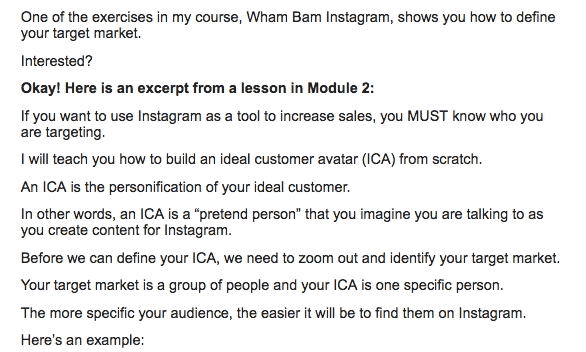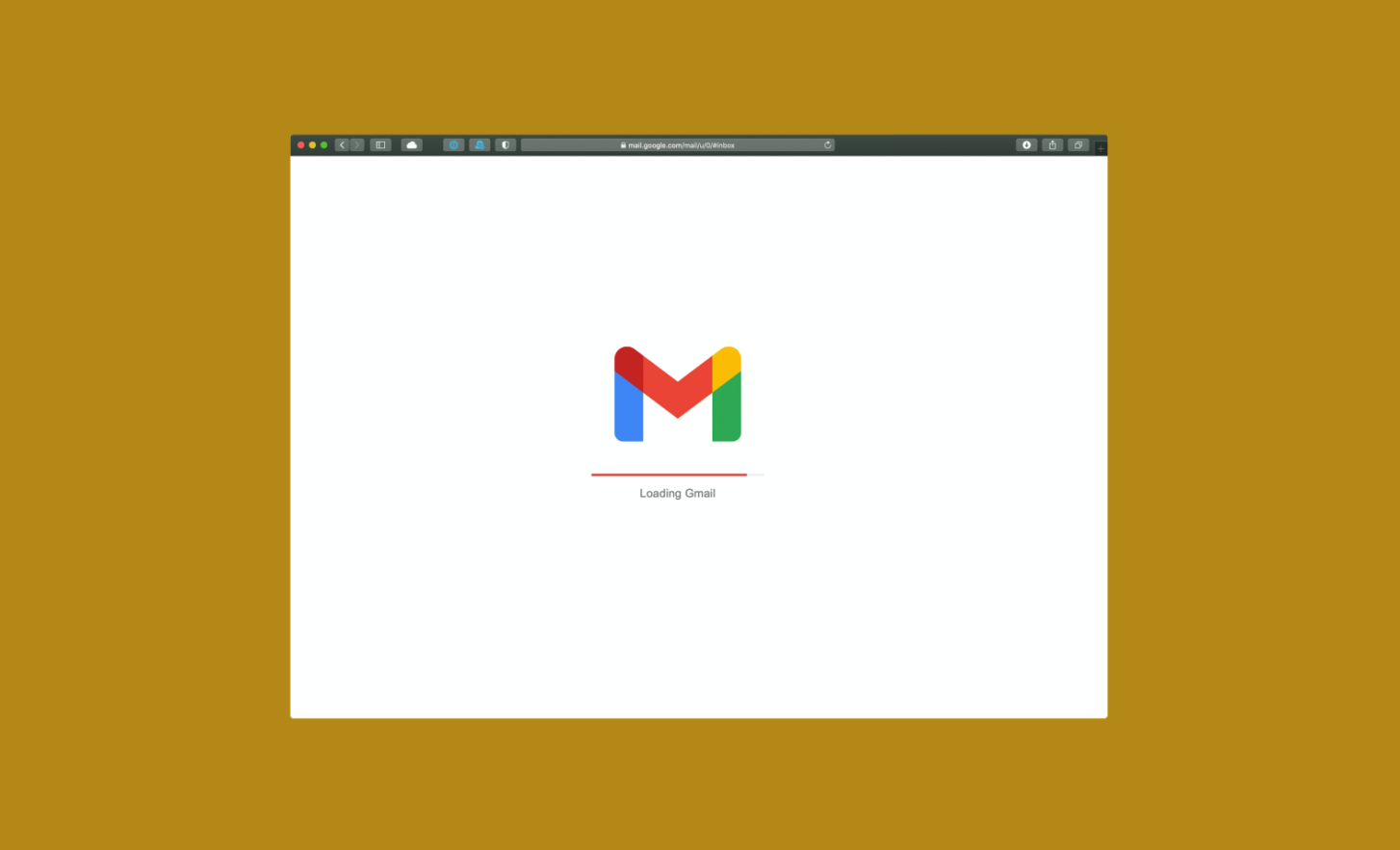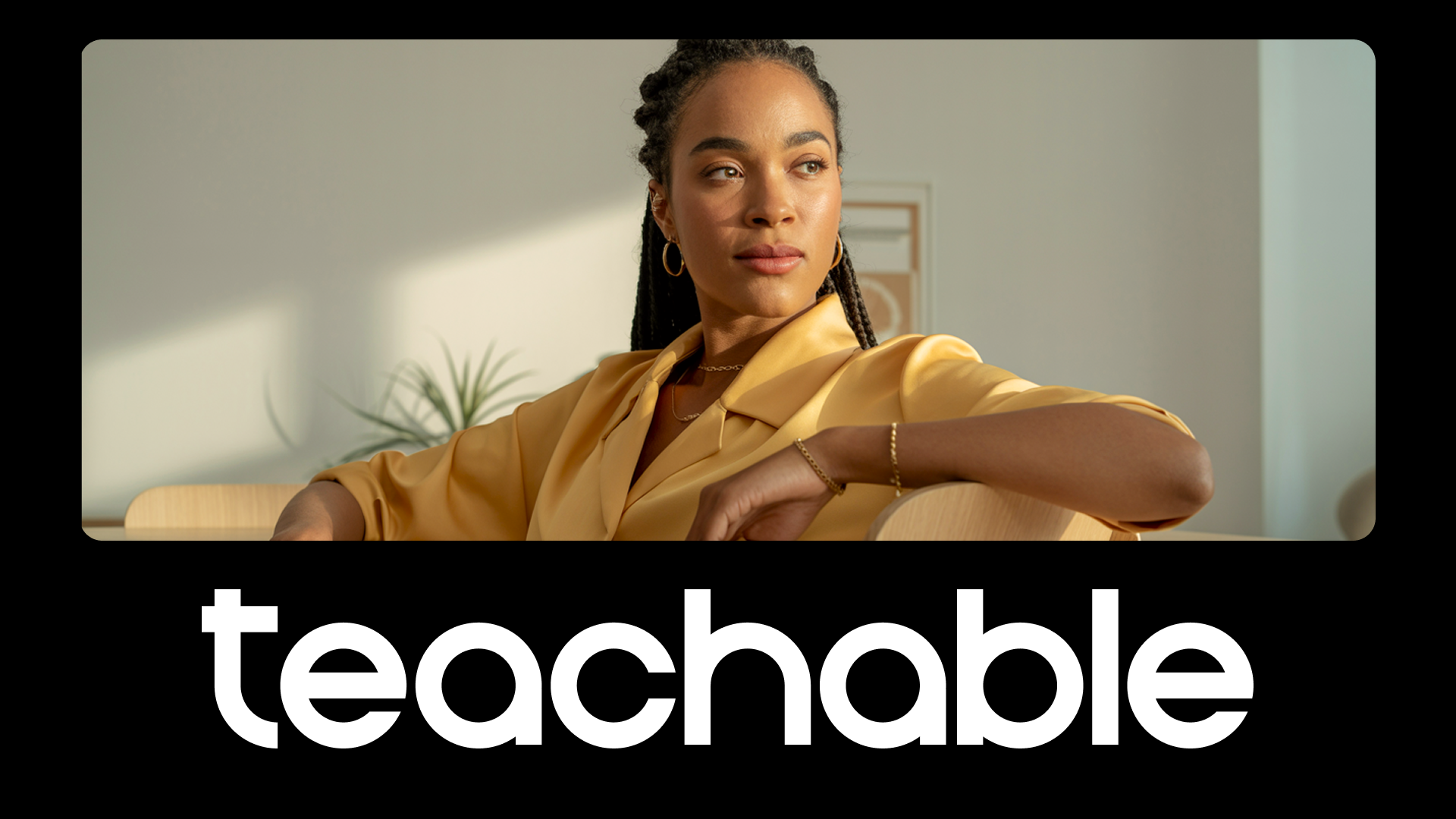You know email and you know online courses. But do you know email courses? The concept seems simple enough—a shorter version of your course that is delivered via email—but the impact of an email course when done correctly is far greater than you may think.
We’ll walk you through what an email course is, why it’s important, and share how you can create your own to build an email list full of people who are primed to buy your course.
The million dollar question: Why an email course?
Brennan Dunn of Double Your Freelancing says, “An email course is just an autoresponder, which is a series of emails that are sent out over a period of time.” And that’s true. But an email course is more than that. It also teaches your audience something real, something necessary, and something related to your course by delivering lessons over a series of automatically generated emails.
See it in action from creators Nat Eliason and Justin Mares of Programming for Marketers, who sent emails daily over the course of a week to deliver their content.

Each one of those emails contains a mini lesson and at the end of the series, subscribers were given an invitation to join the full course Programming for Marketers.
Making an impact
So, what exactly can email courses do for your business. Well, quite a lot actually.
Email courses can:
1. Collect email addresses
You’ve heard us say it before, but your email list is the backbone of your business. You launch your course and make money by emailing your list about your course. The larger your list, the larger the number of potential buyers.
Giving away a free email course is exactly the kind of lead magnet (aka an opt in or freebie) that attracts new subscribers, who are also the right subscribers.
But, why are these the right people? In short, the audience is qualified. They’re people who want a course, want to learn, and want to learn what you’re teaching. Naturally, you’ll want to base your email course on a topic related to your full course, but more on that later.
Lead them on
Because you’re growing your list of the right kind of people quickly, we often refer to an email course as the perfect lead magnet.
Take a peek at our checklist for the perfect lead magnet.
- Does your target audience really want it?
- Can it provide a tangible result and instant gratification?
- Is there perceived and real value?
- Does it solve a specific problem?
- Does it establish you as a trustworthy authority figure?
- Are your benefits communicated through a result-driven headline?
2. Establish a relationship and trust
If you’ve listened to one of our webinars, you’ll know that Teachable often compares selling your course online to buying veggies from a farmers market. Except that you’re not at a farmers market. So you’ve got to give people a way to see people at your stand, taste test, and trust you before they buy your product.
And, an email course does all of these things. Your email course is a hearty taste test. It’s not enough to be a full meal, but enough to excite. When you create your course, you need to give away valuable content—some of your best—so people know exactly what they’re getting from you.
Hello, my name is…
Your email course also should introduces you as an authority students want to learn from. Your email course exemplifies your teaching style and showcases why people may want to choose you over another teacher. It also highlights your authority on the topic, your wealth of knowledge, and what you have to offer.
Remember: You don’t have to be an expert on every aspect of your topic, as long as you can prove you know and can teach the subject at hand.
3. Generate demand for your product
As students work through your email course, they’ll become more and more aware of your course subject matter and what they don’t know yet—but want to. This will generate more demand for your full course.
Course creation gurus like Melyssa Griffin use the same techniques in their webinars before pitching someone to buy a full course.
4. Get back time
This will all take time to create. But, for the number of subscribers you have the potential to gain and the rate at which they convert, it’s a good margin.
There are a couple ways to mine existing content you have to turn it into a stellar email course. For example, maybe you’ll have a meaty blog post you can repurpose, or you can take the first section of your full course and turn it into this powerful lead magnet.
Delivering smaller chunks of valuable content will give you back time to focus on further developing your course content while still nurturing your business.
The anatomy of an email course
Creating and launching a successful email course doesn’t have to be lofty. With these five steps, we’ll show you how to narrow down your topic, strategize your emails, and get to the sales period.
Step 1: Decide what to teach
Before you create anything, figure out what to teach first. Naturally, you want to pick a topic that is valuable, shows off your teaching abilities, and also generates demand for your full course.
Let’s say your full course is entitled, “Planning a Trip to Italy.” You may take the first section of the course “How to Pack for Europe” or “The Top Places to Travel to in Italy” to repurpose as your email course.
Both of theses ideas are valuable on their own, but they also generate demand for a larger course on a full trip to Italy. You’ve attracted your target audience, solved pain points, and generated demand for how to plan a trip to Italy.
Step 2: Structure your email course
Most email courses are sent over a period of one to two weeks. But the key is to send content quickly and consistently enough to warm up new leads. This will let leads know who you are and what you do quickly enough so that they stay intrigued.
Just remember the ideal ratio: Keep emails spaced out enough and containing enough value. This only leads to desire for your full course even more.
Brennan Dunn gives truly powerful advice when he talks about email digestion time. When you space out your course, consider how long it may take someone to complete the tasks. If it isn’t a one day thing, opt for a longer course over a shorter one.
Don’t forget to look at the course as an extended sales pitch. But a word to the wise: Don’t spend the whole time selling. Simply remember this process is an opportunity to turn top funnel leads into nurtured subscribers ready to buy your course.
You can accomplish this by first selling readers on your idea. Move them through valuable content that builds trust in you and demand, and then use the last few emails to provide the solution.
Your outlines may look like this:
Email course structure example #1
- Confirmation: Confirm enrollment in your email course
- Welcome email: Tell people what they’ll be getting and why it’s important (sell the idea of your course and the transformation)
- Email 1: Content
- Email 2: Content
- Email 3: Content
- Email 4: Hard sell your course
- Email 5: Mention your course again + where people can contact you
Email course structure example #2
- Confirmation: Confirm enrollment in your email course
- Welcome email: Tell people what they’ll be getting and why it’s important, plus give a sampler/teaser of what’s coming next
- Email 1: Content
- Email 2: Content
- Email 3: Content
- Email 4: Content
- Email 5: Content
- Email 6: Hard sell your course
- Email 7: Mention your course again + invite people to join a community page or Facebook group you host
Brennan is a fan of selling a course within this free course, but not all email courses do this. Some follow up the day after the email course closes with a hard sell to join their online course. There’s plenty of wiggle room to customize this experience to your crowd.
Above all, if you build trust with your audience and provide real value from the start, they’re more likely to make a monetary investment down the road.
Step 3: Create content for your email course
You know the saying “reduce and reuse.” But it applies to more than just your disposal habits. Reducing your work and reusing your content is strategic for email courses.
If you have content…
Reuse your blog posts to help create your email course. If there are specific blog posts that have performed well, focus on this information in your email course. For example, take your five most popular blog posts and turn them into your email course. Then, go in depth during your full course.
If you don’t have content…
Create it using the above advice on what builds trust by giving value and generates demands.
Petovera suggests five emails with 1,000 words of content. But, tailoring this experience to your audience is what really matters. Write as much as it takes to get your audience to the end goal.
Remember: Know how much hand-holding your audience will need and give them exactly what they want.
Step 4: Automate your workflow
An email course hinges on automation. When a new reader stumbles on your content, they can opt-in and ask for your course and get it, automatically.
This kind of instant gratification makes a difference. When people get something they want instantly, they get a hit of dopamine. For potential customers, this helps create an immediate sense of value.
To make a positive experience for your new leads, set up your autoresponders. You can do this with programs like Aweber, ConvertKit , Mailchimp, or Drip. Or, you can run your email course through Teachable using our drip feature, which is perfect if you’re already using the platform. (If you’re not, you’ll be impressed by our beautiful plug-and-play sales pages.)
Step 5: Make the sale
As much as an email course is value focused, you eventually want to make the sale. That means thinking about leading people from interested to very interested throughout your email series.
Remember how we said you need to sell people on the idea of your course first? You can do that in your very first email.
After sending the automated confirmation for enrollment, send a welcome email that starts to introduce your topic and why you can help.
You’ll also want to seed your full course within your email course. You can do this by mentioning it toward the end of the flow or sending an email the day after your email course closes.
Pro-tip: If you’re mentioning it in the email course, tie it in naturally in the second-to-last email and add a fast-action bonus—something someone can only get now if they buy here—to create a sense of urgency.

Remember: Email courses tend to convert very well, so a higher than normal percentage of your list will buy than if you had only run a giveaway or discount.
Emails and beyond
Once you’ve followed the above five steps to setting up your email course, market, spread, and promote your free course. You can start by linking to it on the homepage of your blog, as this is a quick way to collect email addresses from any new lead visiting your blog.
You can also do a social media push through Instagram Live, TikTok, Clubhouse rooms, and Facebook
Regina Anejinou of Publish Your Thing has great advice, saying:
“Plan out multiple, ideal paths that your audience members can take to get to your free email challenge landing page. Will they hear about it during your online workshop? Will they see a Facebook ad? Will they get a link to it in an email? Will you write multiple blog posts on the topic and tell your audience to “click here for an email challenge the goes in depth on this” or something along those lines?”
At the end of the day, developing several funnel options to attract students and potential customers to your course is the ideal way to grow your list and prime your audience.
Join more than 150,000 creators who use Teachable to make a real impact and earn a real income.



.png)

.png)
.png)


